| Title | The effect of transcutaneous auricular vagus nerve stimulation on cardiovascular function in subarachnoid hemorrhage patients: A randomized trial. |
| Publication Type | Journal Article |
| Year of Publication | 2025 |
| Authors | Tan, G, Huguenard, AL, Donovan, KM, Demarest, P, Liu, X, Li, Z, Adamek, M, Lavine, K, Vellimana, AK, Kummer, TT, Osbun, JW, Zipfel, GJ, Brunner, P, Leuthardt, EC |
| Journal | Elife |
| Volume | 13 |
| Date Published | 2025 Jan 09 |
| ISSN | 2050-084X |
| Keywords | Adult, Aged, Blood Pressure, Electrocardiography, Female, Heart Rate, Humans, Male, Middle Aged, Subarachnoid Hemorrhage, Transcutaneous Electric Nerve Stimulation, Vagus Nerve Stimulation |
| Abstract | BACKGROUND: Subarachnoid hemorrhage (SAH) is characterized by intense central inflammation, leading to substantial post-hemorrhagic complications such as vasospasm and delayed cerebral ischemia. Given the anti-inflammatory effect of transcutaneous auricular vagus nerve stimulation (taVNS) and its ability to promote brain plasticity, taVNS has emerged as a promising therapeutic option for SAH patients. However, the effects of taVNS on cardiovascular dynamics in critically ill patients, like those with SAH, have not yet been investigated. Given the association between cardiac complications and elevated risk of poor clinical outcomes after SAH, it is essential to characterize the cardiovascular effects of taVNS to ensure this approach is safe in this fragile population. Therefore, this study assessed the impact of both acute and repetitive taVNS on cardiovascular function. METHODS: In this randomized clinical trial, 24 SAH patients were assigned to either a taVNS treatment or a sham treatment group. During their stay in the intensive care unit, we monitored patient electrocardiogram readings and vital signs. We compared long-term changes in heart rate, heart rate variability (HRV), QT interval, and blood pressure between the two groups. Additionally, we assessed the effects of acute taVNS by comparing cardiovascular metrics before, during, and after the intervention. We also explored acute cardiovascular biomarkers in patients exhibiting clinical improvement. RESULTS: We found that repetitive taVNS did not significantly alter heart rate, QT interval, blood pressure, or intracranial pressure (ICP). However, repetitive taVNS increased overall HRV and parasympathetic activity compared to the sham treatment. The increase in parasympathetic activity was most pronounced from 2 to 4 days after initial treatment (Cohen's = 0.50). Acutely, taVNS increased heart rate, blood pressure, and peripheral perfusion index without affecting the corrected QT interval, ICP, or HRV. The acute post-treatment elevation in heart rate was more pronounced in patients who experienced a decrease of more than one point in their modified Rankin Score at the time of discharge. CONCLUSIONS: Our study found that taVNS treatment did not induce adverse cardiovascular effects, such as bradycardia or QT prolongation, supporting its development as a safe immunomodulatory treatment approach for SAH patients. The observed acute increase in heart rate after taVNS treatment may serve as a biomarker for SAH patients who could derive greater benefit from this treatment. FUNDING: The American Association of Neurological Surgeons (ALH), The Aneurysm and AVM Foundation (ALH), The National Institutes of Health R01-EB026439, P41-EB018783, U24-NS109103, R21-NS128307 (ECL, PB), McDonnell Center for Systems Neuroscience (ECL, PB), and Fondazione Neurone (PB). CLINICAL TRIAL NUMBER: NCT04557618. |
| DOI | 10.7554/eLife.100088 |
| Alternate Journal | Elife |
| PubMed ID | 39786346 |
| PubMed Central ID | PMC11717364 |
| Grant List | U24-NS109103 / NH / NIH HHS / United States R21-NS128307 / NH / NIH HHS / United States U24 NS109103 / NS / NINDS NIH HHS / United States R01 EB026439 / EB / NIBIB NIH HHS / United States R21 NS128307 / NS / NINDS NIH HHS / United States P41 EB018783 / EB / NIBIB NIH HHS / United States P41-EB018783 / NH / NIH HHS / United States UL1 TR002345 / TR / NCATS NIH HHS / United States R01-EB026439 / NH / NIH HHS / United States |

